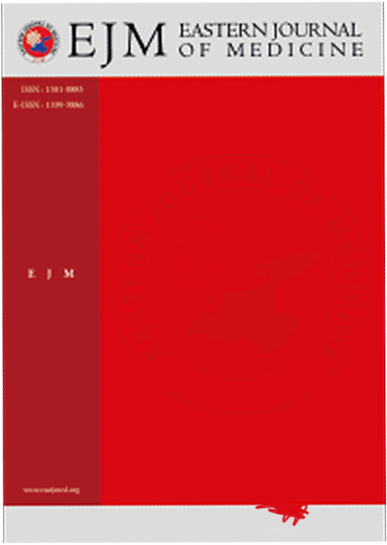Thyroglossal Duct Cyst: Preoperative Imaging, Postoperative Pathology Results, and Revision Surgery Experiences
Mehmet Zeki Erdem1, Semra Ağırbaş1, Abdulaziz YALINKILIÇ1, Burhan Beger2, FATMA AYAZ YALINKILIÇ3, Mehmet Aydın1, ORHAN BEGER41Deparment Of Otolaryngology, Yuzuncu Yil University, Van, Turkey2Faculty Of Medicine, Department Of Pediatric Surgery,yuzuncu Yil University, Van, Turkey
3Faculty Of Medicine, Department Of Pathology, Yuzuncu Yil University, Van, Turkey
4Faculty Of Medicine, Department Of Anatomy, Gaziantep University, Gaziantep, Turkey
INTRODUCTION: Thyroglossal duct cyst is one of the most common congenital cystic lesions of the neck, resulting from the failure of the thyroglossal duct to close during the embryonic period. Discrepancies may occur between preoperative imaging findings and postoperative histopathological results. While a definitive diagnosis is made through histopathological examination, the Sistrunk procedure is widely used for treatment.
METHODS: Retrospective data of 71 patients who underwent surgery with a preliminary diagnosis of TGDC between 2010 and 2023 were analyzed. Demographic characteristics, presenting complaints, preoperative imaging findings, pathology reports, and surgical outcomes were evaluated. Data were analyzed using SPSS (v25) software.
RESULTS: The mean age of the patients was 25.4 years, with 50.7% being female and 49.3% male. Among 41 patients who underwent preoperative imaging, thyroglossal duct cyst was diagnosed in 30 cases, but pathology results confirmed the diagnosis in only 11 cases. The overall concordance rate was 35.2%. The revision surgery rate was 4.2%, and pathology results in these cases did not support thyroglossal duct cyst.
DISCUSSION AND CONCLUSION: The diagnostic accuracy of preoperative imaging methods is limited. Histopathological examination is critical for improving diagnostic accuracy and evaluating malignancy. A multidisciplinary approach can enhance diagnostic and treatment processes.
Histopathological examination is the gold standard in the diagnosis and treatment of thyroglossal duct cyst. A multidisciplinary approach can improve diagnostic accuracy and reduce postoperative complications.
Manuscript Language: English














